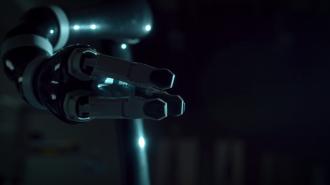Before he was director of the Human Engineering Research Laboratories, Rory Cooper was customizing his own wheelchairs for racing.
His racer was lighter than traditional chairs, optimized for racing on the road, but many of its modifications have since become commonplace in wheelchairs designed for everyday use. Cooper’s chair demonstrated the importance of performance and functionality, ensuring that the user’s quality of life is improved by restoring or augmenting as much of their capability as possible.
Ultralight wheelchairs, for example, not only increase wheelchair usability but reduce the risk of injury. Their light weight and ergonomics, developed through a focus on performance, led to designs that dramatically reduced instances of upper body injury, like rotator cuff and carpal tunnel injuries, in patients using manual chairs.
With the old designs, Cooper says, about 80% of manual wheelchair users developed these issues within five years.
“By understanding the ergonomics, the physiology, and also the interaction between the body and the wheelchair and the activity,” he says, “that incidence is down to about 20%.”
Hugh Herr, head of the awesomely-named Biomechatronics group at the MIT Media Lab and a double amputee himself, has developed multiple advanced prostheses that require no more metabolic energy than a natural limb — a breakthrough in assistive technology. The Ottobock emPower ankle/foot prosthesis, for example, uses a robotic Achilles tendon and calf muscles to provide a push forward, leading to a more natural and stable gait.
“There’s a deep, deep relationship between the functionality of the device and a person’s identity of what their body is,” Herr says. Although Herr believes that functionality alone is not enough to create that corporeal conception. The more that an assistive device is linked to the nervous system in a bidirectional way — where the nervous system influences the prosthesis and vice versa — the more a user feels the prosthesis to be part of their organic body, rather than merely an external tool.
Herr is studying not only brain control of synthetic motors but how sensory feedback from the bionic limb creates “neurological embodiment.”
“That level of ownership and identity over the device completely changes the perception of how the person views the device, and whether they believe it is beautiful or not,” Herr says. While the jury is still out, he theorizes that neuro-embodiment may be increased by devices which resemble biological features, like the emPower foot/ankle.
High-level performance not only impacts how individuals perceive their assistive devices, but may also influence society’s perception as well. Herr cites the blade-like prosthesis made famous by South African sprinter Oscar Pistorius as an example. While some devices that aren’t “biomimetic” — meaning they aren’t designed to resemble an organic body part — can inspire unwanted curiosity and attention (and even outright fear or aversion), if they achieve a certain level of performance, they can become something beautiful or awe-inspiring.
Seeing Pistorius flash his blades, slicing through space and time, the very unnatural-looking prosthesis transcends its appearance and becomes a magnificent tool, something to be praised for its performance and power — the way that a Formula 1 car engenders awe when a Toyota Corolla does not.
Advanced Prosthetics Built to Use—and to Last
Function means little, however, if the device cannot hold up to consistent use.
“The fact that the person relies on the technology to replace or augment some function that is either impaired or no longer there means that (assistive technology) has super high reliability requirements,” Cooper says. Since the loss of an assistive device can lead to a major impact on a user’s quality of life, ensuring the devices work for as long as possible and with minimal maintenance is an important aspect of their design.
Durability must be balanced with function, however. If you wanted maximum durability, you’d use concrete and steel, but a prosthetic device made from heavy-duty materials would be terribly impractical. Assistive technologies require materials that have a high strength to weight ratio and are capable of withstanding continual wear.
Materials used in aerospace design fit the bill perfectly: carbon composite, titanium, nylon, aircraft-grade aluminum, and Kevlar all find their way into assistive tech design. All are strong and light, but which material works best depends on the function of the prosthesis, with the right combination striking the perfect balance between function, durability, and aesthetic. Cooper’s wheelchair has a titanium frame, a carbon fiber back, and wheels with aluminum rims and hubs revolving around Kevlar spokes. It is light, strong, and matches the material properties to the specific functions of each component.
How a material can be worked is also an important consideration. The delicate finger prostheses manufactured by Naked Prosthetics, for instance, must be machined down to the millimeter — and some parts to hundredths of millimeters — to ensure they fit a patient’s amputation site and allow for maximum function and comfort. Medical-grade nylon is tough and lasts, and it also can be more precisely engineered than other materials.
Of particular concern is the material for sockets that make contact with the patient’s skin. Silicone, urethane, and thermoplastic elastomer are frequently used as socket liners, says Jamie Vandersea, an upper arm prosthetics specialist at Medical Center Orthotics & Prosthetics. Silicon and thermoplastic elastomer contact the skin well enough to create suction, helping to attach the prosthetic.
Looks Matter – From Custom Prosthetic Design to Custom Wheel Chairs
Aesthetic is also a crucial aspect of design in advanced prosthetics. As assistive technologies are uniquely intertwined with their user’s lives, designing them to be as beautiful, interesting, bold, or inconspicuous as the user desires takes on a higher level of importance.
The aesthetic design of an assistive device can alter how it is perceived, both by the user and others. Devices that are functional but do not resemble organic limbs, like the grasping hooks of a prosthetic hand, may conjure up images of movie villains and babysitter-stalking urban legends. Devices that try too hard to resemble organic limbs can end up mired in the “uncanny valley.” Bio-mimesis may be desirable for a user who wants their assistive device to blend in, perhaps to avoid questions or stares. But a device that does not attempt to hide, but instead uses colors, patterns, and a unique design to stand out may help a user feel more confident and comfortable, and perhaps steer attention toward how cool the device is, rather than the injury it is treating.
Social expectations impact aesthetic design as well. Vandersea often works with young male veterans who desire functionality over looks. When he worked with older women in Malta, the opposite prevailed; they were concerned people would talk about the prosthetic if it did not closely resemble an organic limb.
Assistive devices can also be an extension of a person’s personality, much like fashion. Naked Prosthetics designed a custom purple prosthesis for a purple-loving patient, while another had one coated with clinquant rose gold. Naked’s prostheses come in an array of colors and patterns, chosen both for their beauty, based on input from patients, as well as the ability of some colorways to hide the little nicks and gouges a finger prosthesis is bound to accrue.
Aesthetic is far from superficial. “The wheelchair is an expression of self,” Cooper says. Colors and detailing allow for creative expression, but they also bring assistive technology out of the cold world of medical devices and closer to the complex, intimate bodily extensions that they are meant to be.
Cooper believes the most important thing a designer needs is to listen to and incorporate what the patient wants, and the correct balance will be better struck. Every individual is unique, Cooper says, and what they want and need should be translated into design.






